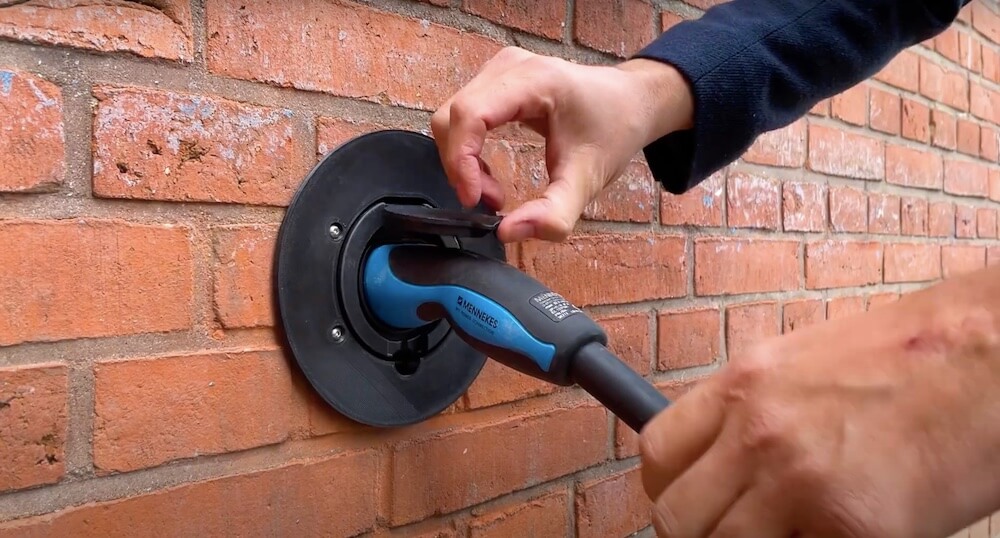In August 2023, fully electric vehicles hit a record of over one-fifth of new car sales in Europe, in addition to 23.9% hybrid-electric vehicles. Unsurprisingly, charging infrastructure is struggling to keep up with that exponential growth, especially in urban areas. Copenhagen-based Elby just launched a potential solution: integrating chargers into the walls of existing multistory buildings that have adjacent street parking.
Vehicle owners use their own cable to connect their car to a wall unit, running the cable through a slim gutter cut into the sidewalk. They switch on the charger using Elby's app and pay DKK 2 (USD 0.28/EUR 0.27) plus the cost of electricity, among the lowest charging rates in the Danish market, with no subscription or hidden fees. Building owners, meanwhile, receive up to 60% of profits generated from their Elby sockets.
Multistory buildings typically have excess power capacity that's rarely used. Elby is equipped with a load balancer, ensuring the system never draws too much electricity and the energy needs of apartments and their residents are prioritized. The Danish startup's innovation is patent-pending, open for preorders now and set to roll out in Greater Copenhagen in H1 2024. The introductory price for corporate and rental properties is DKK 20,000 (USD 2,839/EUR 2,682); for owner-occupied buildings and public housing, Elby will seek to cover outlay costs.

Trend Bite
Elby's innovation could serve as a blueprint for rapid and cost-effective expansion of urban EV charging solutions. By leveraging existing infrastructure, the system is — as its founders point out — wildly scalable. Installing a unit takes just a few hours. Meanwhile, traditional curbside chargers aren't just costlier and slower to place, but also clutter up streetscapes.
Distributing a share of the charging profits to a building's owners or users is icing on the cake. It could also have sustainable ripple effects, with buildings adding renewable energy sources to power multiple Elby units and increase their profit margin. Which infrastructure could your brand tap into to help power the electric age? Or how could you establish cooperative relationships with businesses and consumers to introduce a new and wildly scalable service of your own?
Join 100,000+ future-focused professionals in 180 countries already receiving our free trend updates.
Select your country